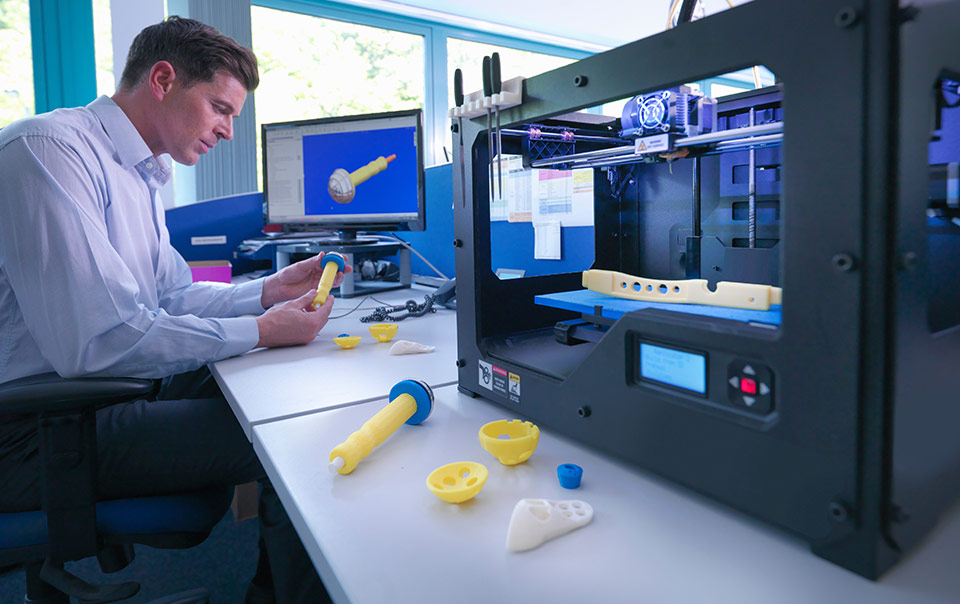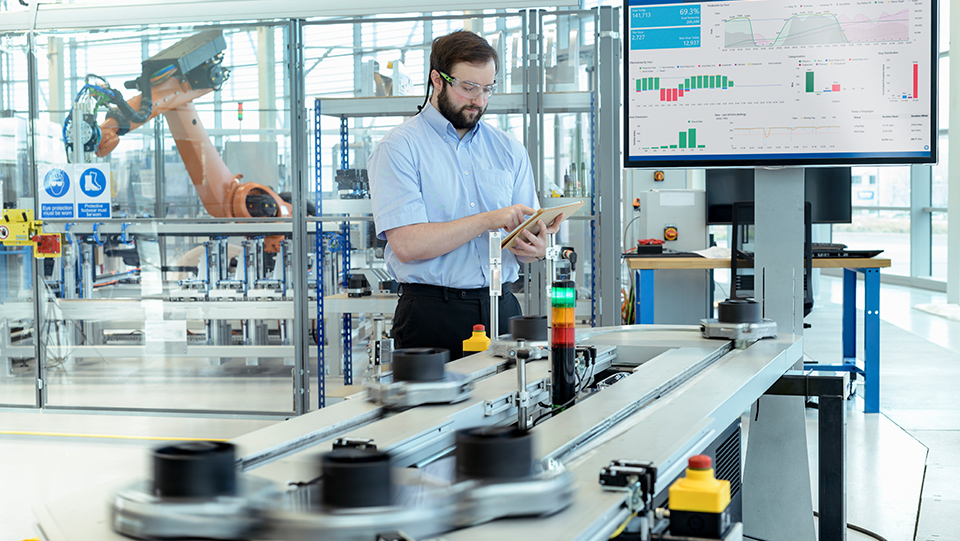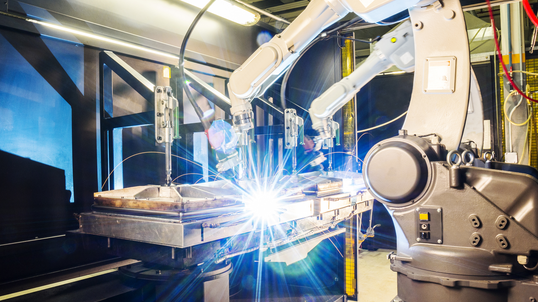Preparing for the Risks of 3D Printing in Manufacturing


In applications ranging from the automotive and aerospace industries to healthcare, food and consumer goods, 3D printing can shorten development cycles, lessen time-to-market and lower the cost of traditional manufacturing. By 2024, the reach of global 3D printing is estimated to be $34.8 billion.1
But while the technology’s potential to revolutionize manufacturing has been well documented, the risks are not as well defined. In some cases, 3D printing, also known as additive manufacturing, brings uncharted risks including cyber and intellectual property risks. Every party in a global supply chain should understand the liabilities involved in 3D printing and be prepared to minimize them.
“Should a 3D printed part or food cause injury or illness, it could result in a financially devastating lawsuit,” says Amanda Bohn, Chief Underwriting Officer of Technology and Life Sciences at Travelers.
“Therein lies the challenge: The field is so new, no one is sure how liable they really could be.”
Following are four key risk categories for 3D printing that technology companies should understand, and an illustrative risk scenario for each category.
Property damage risk
If a 3D printed object causes property damage due to a defect or a failure to function as intended, it could lead to a lawsuit. Any company or individual involved in the product’s manufacturing or distribution chain could find themselves named as a defendant.
In a real-world scenario to illustrate this risk, a medical device company in a leased manufacturing space 3D prints orthopedic appliances they intend to ship to distributors. But, a band holding several wires within the printer breaks, causing the wires to fall too close to the printer’s heat source, and ignites. The ensuing fire causes smoke damage to other tenants’ property.
Bodily injury risk
Although few bodily injury cases involving 3D printed products have gone to court, it is likely that liability would fall upon any of three possible parties: the product designer, the manufacturer who printed the product, or the raw material (feedstock) supplier. The following scenarios could form the basis of liability in a lawsuit if bodily injury results:
- Defective design: If a 3D printed product is poorly designed or the designer engineered the product in a substandard way, an allegation of defective design could be made. For example, a patient with a prosthetic leg fell down a flight of stairs and was injured. An investigation revealed that a 3D printed part of the knee assembly broke due to production defects before it left the factory. The patient sued the device manufacturer.
- Defective manufacturing: If a product was manufactured improperly, or was damaged during the manufacturing process in a way that deviates from its design and prevents its safe use, an allegation of defective manufacturing could be made. Defective manufacturing could also occur if the 3D printer feedstock contaminated the product.
- Defective marketing (failure to warn): If the product was designed and manufactured properly but the user wasn’t properly instructed on how to use the device or they weren’t warned about the dangers of using it improperly, an allegation of failure to warn could be made.
Cyber and intellectual property risk
A 3D printed product is designed using computer-aided drafting (CAD) software, which produces files that may contain proprietary information. The loss or theft of those files could be disastrous for companies, potentially leading to digital sabotage or design theft.
An example of a cyber risk scenario is a cloud data breach of a medical device company’s design files. A skilled hacker penetrated one of the remote sites’ firewalls and stole the technical design files. “Look-alike” products were then released to the market at a cheaper price. The medical device company sued the cloud data provider, the manufacturer and 3D printer maker.
Technology errors and omissions risk
If the printed product fails to work as intended, a company can be held liable for another company’s economic loss, when due to an error, omission or a negligent act. In addition to the risk of a lawsuit, product failures can interrupt a customer’s business continuity and damage the printer maker’s reputation.
In one example of technology errors and omissions risk, an e-commerce retailer invests in web servers built with 3D-printed circuit boards. Several of the boards fail during the holiday season due to heavy customer traffic, causing service outages and lost revenue. The retailer sues the server vendor, the printer maker and the chip designer for seven-figure losses.
Reducing risks of 3D printing
While the possibilities of 3D printing may seem almost limitless, a note of caution is important as the risks also continue to evolve. All parties in a supply chain need to be prepared to minimize their exposure to the key risk categories of 3D printing, and they should make sure that their 3D-printed products and components meet the same rigorous testing requirements as traditionally manufactured products.



